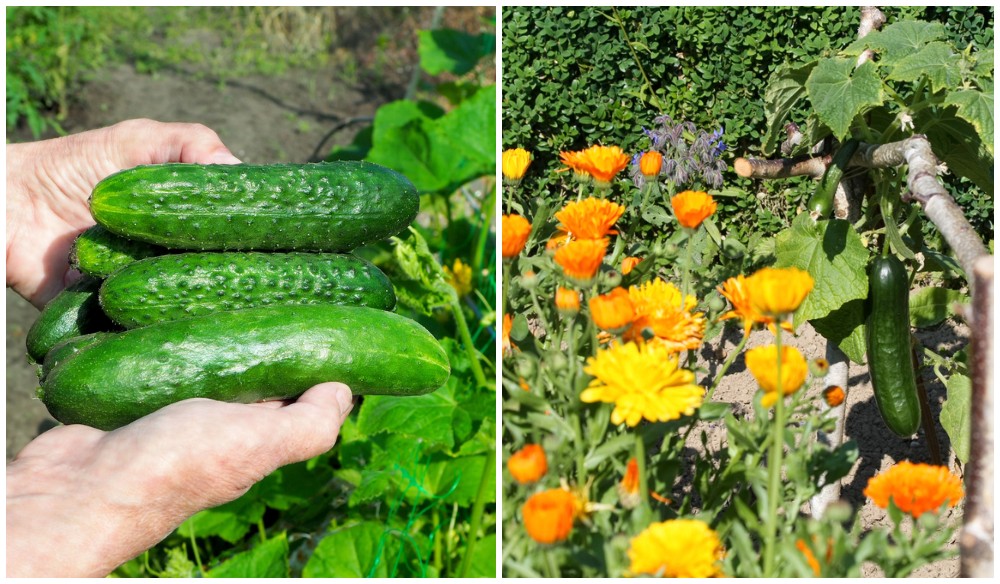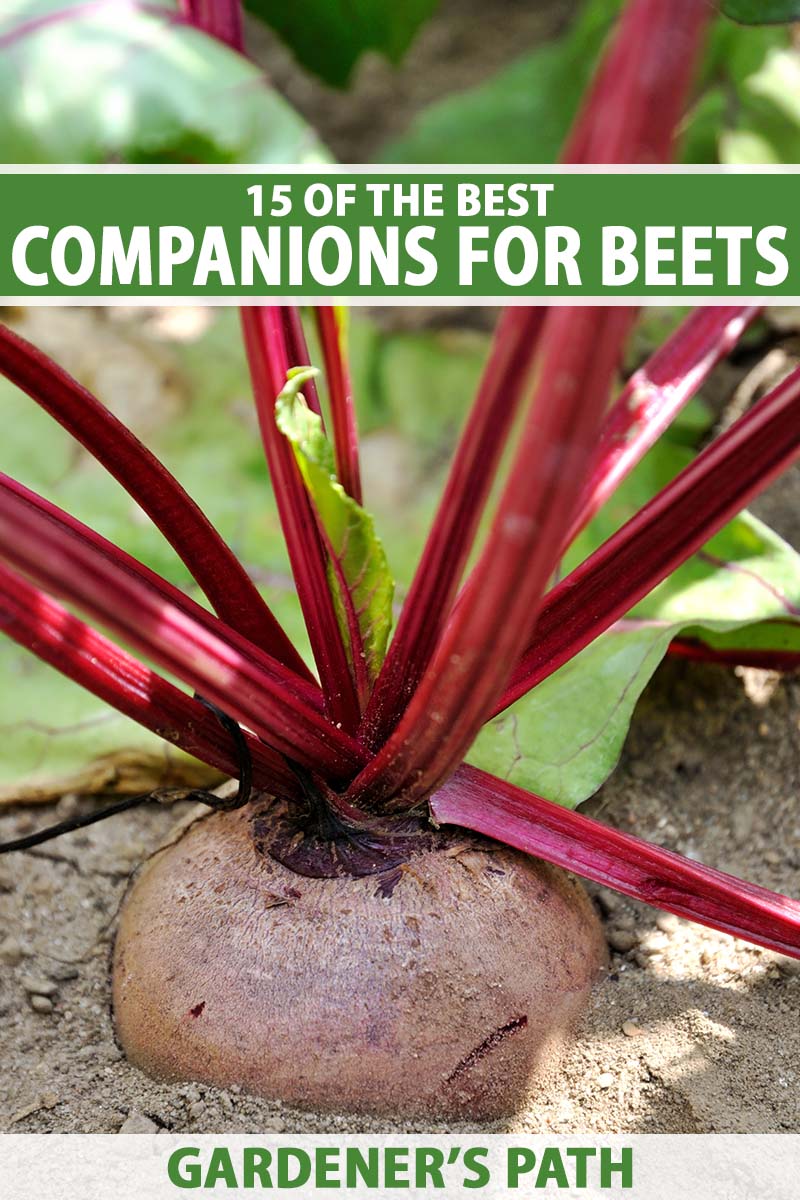Beet The Competition With These Companion Plants
Beet the Competition with These Companion Plants
Beets are a delicious and nutritious root vegetable that can be grown in a variety of climates. They are also relatively easy to care for, making them a great choice for beginner gardeners.
One way to improve your beet harvest is to plant companion plants. Companion planting is the practice of planting certain plants together that benefit each other. There are a number of different companion plants that can be beneficial for beets, including:
- Onions and garlic: These alliums help to repel pests such as aphids, flea beetles, and carrot root fly.
- Marigolds: Marigolds are known for their insect-repelling properties. They can also help to improve the flavor of beets.
- Carrots: Carrots and beets help to improve each other's growth. Carrots help to loosen the soil, which makes it easier for beets to grow. Beets help to deter the carrot root fly, which is a common pest of carrots.
- Lettuce: Lettuce helps to suppress weeds and shade the soil, which can help to keep beets cool and prevent them from bolting.
- Bush beans: Bush beans fix nitrogen in the soil, which can benefit beets.
- Brassicas: Brassicas, such as broccoli, cabbage, and kale, help to attract beneficial insects, such as ladybugs, which can help to control pests.
In addition to these companion plants, there are a few plants that you should avoid planting near beets. These include:
- Pole beans: Pole beans compete with beets for nutrients and water.
- Spinach: Spinach can suppress the growth of beets.
- Peas: Peas can attract the same pests as beets, such as aphids and carrot root fly.
By planting companion plants with your beets, you can improve your harvest and reduce the amount of pests and diseases that your plants are susceptible to.
Main Content
In addition to the companion plants listed above, there are a few other things you can do to help your beets thrive.
- Choose the right location: Beets prefer full sun, but they can also tolerate partial shade. They should be planted in well-drained soil that is rich in organic matter.
- Water regularly: Beets need to be watered regularly, especially during hot, dry weather.
- Fertilize with compost or manure: Beets benefit from regular fertilization. You can use compost or manure to help improve the nutrient content of the soil.
- Control pests and diseases: Beets are susceptible to a number of pests and diseases, such as aphids, flea beetles, and carrot root fly. You can control these pests with insecticidal soap, neem oil, or other organic pesticides.
With a little care and attention, you can grow healthy, productive beets in your garden.
Conclusion
Beets are a delicious and nutritious vegetable that is easy to grow. By planting companion plants with your beets, you can improve your harvest and reduce the amount of pests and diseases that your plants are susceptible to.
Here are some additional tips for growing beets:
- Sow seeds directly in the garden: Beet seeds can be sown directly in the garden in early spring or fall.
- Thin seedlings to 2-3 inches apart: Once the seedlings have emerged, thin them to 2-3 inches apart.
- Harvest beets when they are young and tender: Beets are best harvested when they are young and tender. The roots should be about 2 inches in diameter.
- Store beets in a cool, dark place: Beets can be stored in a cool, dark place for up to 2 weeks.
With a little care and attention, you can grow healthy, productive beets in your garden.
Beet companion planting is a great way to improve your garden's health and productivity. By planting beets near certain companion plants, you can help to deter pests, attract beneficial insects, and improve the overall health of the soil.
Some good companion plants for beets include:
- Carrots: Carrots and beets are both root vegetables, so they benefit from each other's presence. Carrots help to deter the carrot fly, which is a common pest of beets.
- Lettuce: Lettuce helps to suppress weeds and attract beneficial insects, which can help to protect your beets from pests.
- Pole beans: Pole beans fix nitrogen in the soil, which can benefit beets. They also provide shade for beets, which can help to keep them cool in hot weather.
- Spinach: Spinach helps to suppress weeds and attract beneficial insects. It also helps to improve the overall health of the soil.
If you're interested in learning more about beet companion planting, I recommend visiting Gardenia Inspiration. This website has a wealth of information on the topic, including a list of recommended companion plants, tips for planting and harvesting beets, and information on how to attract beneficial insects to your garden.
FAQ of beet companion
Question 1: What are some good companion plants for beets?
Answer: Beets are a relatively easy crop to grow, and they can be companion planted with a variety of other vegetables. Some good companion plants for beets include:
- Beans: Beans are nitrogen-fixing plants, which means they can help to improve the soil quality for beets.
- Broccoli: Broccoli helps to repel pests that can damage beets, such as aphids and cabbage moths.
- Cabbage: Cabbage is another member of the Brassica family, and it can help to deter pests that target beets.
- Lettuce: Lettuce helps to suppress weeds, which can help to keep the soil around beets healthy.
- Onions: Onions help to repel root-knot nematodes, which can be a problem for beets.
Question 2: What are some plants that should not be planted near beets?
Answer: There are a few plants that should not be planted near beets, as they can compete for nutrients or attract pests. These plants include:
- Carrots: Carrots and beets are both root crops, and they can compete for space and nutrients.
- Fennel: Fennel can release a chemical that can stunt the growth of beets.
- Pole beans: Pole beans can cast shade on beets, which can reduce their yields.
- Spinach: Spinach can attract the same pests as beets, such as aphids and cabbage moths.
Question 3: How do I plant beets with companion plants?
Answer: When planting beets with companion plants, it is important to consider the spacing requirements of each plant. For example, beans and broccoli need more space than lettuce and onions. You can also plant beets in rows with companion plants in between the rows.
Question 4: What are the benefits of companion planting with beets?
Answer: There are several benefits to companion planting with beets. Companion plants can help to:
- Improve soil quality: Nitrogen-fixing plants, such as beans, can help to improve the soil quality for beets.
- Deter pests: Some companion plants, such as cabbage, can help to deter pests that target beets.
- Suppress weeds: Companion plants that help to suppress weeds, such as lettuce, can help to keep the soil around beets healthy.
- Attract beneficial insects: Some companion plants, such as onions, can attract beneficial insects that help to control pests.
Question 5: What are some other tips for companion planting with beets?
Answer: Here are some other tips for companion planting with beets:
- Do your research: Before you plant beets with companion plants, it is important to do your research to make sure that the plants will be compatible.
- Experiment: There is no one-size-fits-all approach to companion planting, so it is important to experiment to find the combinations that work best for you.
- Be flexible: The specific benefits of companion planting can vary depending on the growing conditions, so be flexible and adjust your plantings as needed.
Image of beet companion
5 different images of "beet companion" from Pinterest.com:
- Carrots: Carrots and beets are both root vegetables that grow well together. They have similar nutrient requirements and help to suppress weeds.

- Cucumbers: Cucumbers and beets can be planted together because they have different water needs. Cucumbers need more water, while beets are more drought-tolerant.

- Lettuce: Lettuce and beets are both cool-season vegetables that can be planted together. They help to shade the soil, which can help to keep it cool and moist.

- Onions: Onions and beets can be planted together because they help to repel pests. Onions have a strong smell that deters many pests, while beets can help to attract beneficial insects.

- Spinach: Spinach and beets can be planted together because they have similar nutrient requirements. They both need well-drained soil and full sun.

Post a Comment for "Beet The Competition With These Companion Plants"